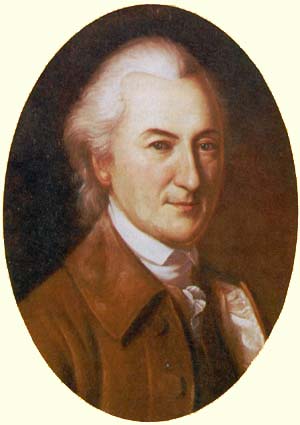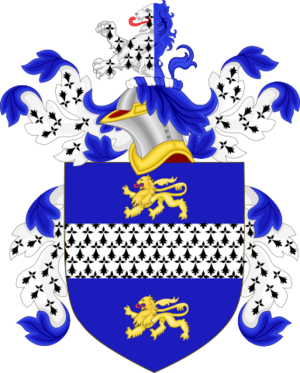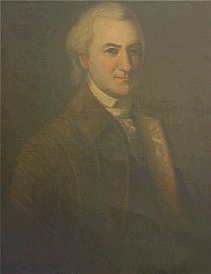John Dickinson facts for kids
Quick facts for kids
John Dickinson
|
|
|---|---|
 |
|
| 5th President of Pennsylvania | |
| In office November 7, 1782 – October 18, 1785 |
|
| Vice President | James Ewing James Irvine Charles Biddle |
| Preceded by | William Moore |
| Succeeded by | Benjamin Franklin |
| 5th President of Delaware | |
| In office November 13, 1781 – January 12, 1783 |
|
| Preceded by | Caesar Rodney |
| Succeeded by | John Cook |
| Continental Congressman from Delaware |
|
| In office January 18, 1779 – February 10, 1781 |
|
| Continental Congressman from Pennsylvania |
|
| In office August 2, 1774 – November 7, 1776 |
|
| Personal details | |
| Born | Nov 2 Jul./Nov 13Greg., 1732 Talbot County, Province of Maryland, British America |
| Died | February 14, 1808 (aged 75) Wilmington, Delaware, U.S. |
| Resting place | Friends Burial Ground, Wilmington |
| Political party | Democratic-Republican |
| Spouse | Mary (Polly) Norris |
| Residences | Kent County, Delaware Philadelphia, Pennsylvania Wilmington, Delaware |
John Dickinson (November 13, 1732 – February 14, 1808) was a very important person in the early history of the United States. He is known as a "Founding Father" and was called the "Penman of the Revolution." This nickname came from his famous writings, especially his "Letters from a Farmer in Pennsylvania." These letters were published in 1767 and 1768.
Dickinson was a lawyer and politician from Philadelphia, Pennsylvania, and Wilmington, Delaware. He helped write many important documents. He drafted the 1774 Petition to the King and the 1775 Olive Branch Petition. These were attempts to make peace with King George III of Great Britain. When peace failed, he helped write the 1775 Declaration of the Causes and Necessity of Taking Up Arms.
Later, Dickinson worked on the first draft of the Articles of Confederation and Perpetual Union. This was the first plan for how the new United States would be governed. He also attended the Constitutional Convention of 1787 and signed the United States Constitution. He was a leader at the 1786 Annapolis Convention.
Besides his political work, he wrote "The Liberty Song" in 1768. He was also a military officer during the American Revolution. John Dickinson served as the president of both Delaware and Pennsylvania. He was one of the richest people in the British American colonies. After he died, President Thomas Jefferson praised him as a great hero of the Revolution.
John Dickinson and his wife, Mary Norris Dickinson, are remembered through several places. Dickinson College and the Dickinson School of Law are named after them. John Dickinson High School in Delaware also carries his name.
Contents
- John Dickinson's Early Life and Family
- John Dickinson's Role in the Continental Congress
- Returning to Poplar Hall
- Serving as President of Delaware
- Serving as President of Pennsylvania
- Helping Create the United States Constitution
- John Dickinson's Death and Legacy
- John Dickinson's Views and Beliefs
- Images for kids
- See also
John Dickinson's Early Life and Family
John Dickinson was born in Talbot County, Maryland, on his family's tobacco farm called Croisadore. His family had come from England in the 1600s. They were members of the Quakers. His great-grandfather, Walter Dickinson, started the family's landholdings in Maryland and Delaware.
Over the years, the family's land grew. John's father, Samuel Dickinson, owned thousands of acres. These large farms used enslaved people to work the land. However, John Dickinson later freed the enslaved people on his farm in Delaware in 1777.
John's father, Samuel, married Judith Troth and had nine children. After Judith died, Samuel married Mary Cadwalader. She was from a well-known Quaker family in Philadelphia. John, Thomas, and Philemon were their sons. In 1739, John's half-sister married in an Anglican church. This was against Quaker rules.
Because of this, Samuel Dickinson moved his family to Poplar Hall in Kent County, Delaware. This farm was very active, shipping wheat and other crops. Many people working there were servants and enslaved people.
Education and Legal Career

John Dickinson was taught at home by his parents and tutors. One of his tutors, William Killen, became a lifelong friend. Killen later became Delaware's first chief justice. John was a smart and energetic student. He loved his home but was also drawn to the city of Philadelphia.
At 18, he began studying law in Philadelphia. He became friends with other students like George Read. In 1753, he went to London to study law for three years at the Middle Temple. He studied important legal works there. In 1757, he became a lawyer in Pennsylvania.
Writing and Marriage
Dickinson became famous for his "Letters from a Farmer in Pennsylvania." He wrote these letters to protest the Townshend Acts. These acts were new taxes from the British Parliament. Dickinson argued that Parliament could control trade but could not tax the colonies just to make money. He warned that if the colonies accepted these taxes, more would follow. These letters were very important before the American Revolution.
In 1770, John Dickinson married Mary Norris, also known as Polly. She was a well-educated woman from Philadelphia. She owned a large amount of property and had a huge library. They had five children, but only two, Sarah and Maria, lived to adulthood. John never officially joined the Quaker church. He believed it was sometimes right to fight in self-defense.
In Philadelphia, they lived at Fair Hill. They also had a mansion on Chestnut Street. This mansion was used as a hospital during the war. Fair Hill was burned by the British during the Battle of Germantown. Dickinson lived at Poplar Hall in Delaware for some time. This home is now owned by the state of Delaware and is open to visitors.
John Dickinson's Role in the Continental Congress
Dickinson was a delegate from Pennsylvania to the First Continental Congress in 1774. He also served in the Second Continental Congress in 1775 and 1776. He wrote many declarations for the Congress. He wrote the Olive Branch Petition as a final try for peace with Britain. King George III did not even read it.
Dickinson wanted to find a peaceful solution, not independence. He believed the colonies should try to work things out with Britain. He prepared the first draft of the Articles of Confederation in 1776. He thought the colonies needed a governing document if they were going to fight a war.
Debate on Independence
When the Congress debated the Declaration of Independence in July 1776, Dickinson spoke against it. He felt that Congress should finish the Articles of Confederation first. He also wanted to secure help from other countries. He did not believe violence was the right way to solve the problem.
Dickinson chose not to vote for the Declaration of Independence. He also did not sign it. He knew this decision would make him unpopular. He then left Congress and joined the Pennsylvania militia. John Adams, who strongly supported independence, praised Dickinson for his courage.
Dickinson was one of only two members of the First Continental Congress who actually fought in the war. He became a brigadier general in the Pennsylvania militia. He led 10,000 soldiers to protect Elizabeth, New Jersey, from British attacks.
Returning to Poplar Hall
In December 1776, Dickinson left the military. He went to stay at Poplar Hall in Delaware. He learned that his home in Philadelphia had been taken and used as a hospital. He stayed at Poplar Hall for over two years.
In August 1777, he served as a private soldier with the Kent County militia. He helped delay the British army's march to Philadelphia. Later, he learned that the British had burned his Fair Hill property.
Freedom for Enslaved People
During these years, Dickinson made an important decision. In 1777, he decided to free the enslaved people on his farm. He owned 37 enslaved people. This was a brave act, especially for a wealthy landowner. Quaker beliefs, which were against slavery, likely influenced him. His farm had also changed from tobacco to crops like wheat, which needed less labor. John Dickinson was the only Founding Father to free his enslaved people between 1776 and 1786.
Serving as President of Delaware
In January 1779, Dickinson became a delegate for Delaware to the Continental Congress. During this time, he signed the Articles of Confederation. He had written the first draft of these Articles earlier. In August 1781, his Poplar Hall home was badly damaged by a raid.
In October 1781, Dickinson was elected to the State Senate. Soon after, the Delaware General Assembly elected him as the president of Delaware. He took office on November 13, 1781. He worked to bring order after the Revolution. He also pushed the Assembly to get more soldiers for the militia and to fund the government. He served until November 7, 1782.
Serving as President of Pennsylvania
Dickinson was also elected to lead Pennsylvania. On November 7, 1782, he became the president of Pennsylvania. He was re-elected twice and served for three years. He worked with different groups in the General Assembly.
One of his most important actions was how he handled the Pennsylvania Mutiny of 1783. This was a protest by Pennsylvania soldiers who demanded their pay. Dickinson refused to use military force against them. This led Congress to move to Princeton, New Jersey.
Helping Create the United States Constitution
After his time in Pennsylvania, Dickinson moved back to Delaware. He was chosen to represent Delaware at the Annapolis Convention, where he was president. In 1787, Delaware sent him as a delegate to the Constitutional Convention of 1787.
At the Convention, he supported a strong central government. He helped make sure that each state, no matter its size, would have an equal vote in the future United States Senate. He also helped draft parts of the First Amendment. After the Convention, he wrote essays to promote the new Constitution. He used the pen name Fabius.
In 1791, Delaware held a meeting to update its own Constitution. Dickinson was chosen to lead this meeting. He was very important in shaping the final document. He also worked to end slavery and gave money to help those in need. He retired from public office in 1794 due to poor health.
John Dickinson's Death and Legacy
| Designations | |
|---|---|
|
Pennsylvania Historical Marker
|
|
| Official name | John Dickinson (1732–1808) |
| Type | Roadside |
| Criteria | American Revolution, Government & Politics 18th Century, Military |
| Designated | September 23, 2001 |
| Location | Statesman, author. In influential writings, 1765–74, argued against British policies. Later, as a member, Continental Congress, 1774–76, favored conciliation and opposed the Declaration of Independence; nonetheless, served the patriot cause as colonel, 1st Philadelphia Battalion. President, Pa. Supreme Executive Council, 1782–85. Delegate, U.S. Constitutional Convention, 1787; a strong supporter of the Constitution. Deeded land to Merion Meeting, 1801–04. |
John Dickinson died in Wilmington, Delaware, on February 14, 1808. He was buried in the Friends Burial Ground. Before he died, he freed all of his enslaved people. He believed slavery should end.
President Thomas Jefferson wrote about Dickinson after his death. He called him "a more estimable man, or truer patriot." Jefferson said Dickinson's name would be remembered as one of the great heroes of the Revolution.
Dickinson College and the Dickinson School of Law are named after John and Mary Norris Dickinson. He is also remembered by Dickinson Street in Madison, Wisconsin, and John Dickinson High School in Delaware.
John Dickinson's Views and Beliefs
John Dickinson was a scholar who studied history. He believed people should think for themselves. His studies led him to be careful about going to war. He thought it was better to use diplomacy to solve problems. He was a thoughtful person, influenced by his Quaker upbringing.
Dickinson believed in careful and wise actions. He once wrote, "We cannot act with too much caution in our disputes." He thought that anger could make problems worse. His education and religious beliefs helped him make good political decisions.
Dickinson's Quaker beliefs also influenced his views on equality. He believed women were spiritually equal to men. He listened to political advice from women, including his wife and mother. He also encouraged other women writers. As a lawyer, he often helped poor women in court. In 1776, he suggested using gender-neutral language in the Articles of Confederation. This was very advanced for his time.
Images for kids
See also
 In Spanish: John Dickinson para niños
In Spanish: John Dickinson para niños









